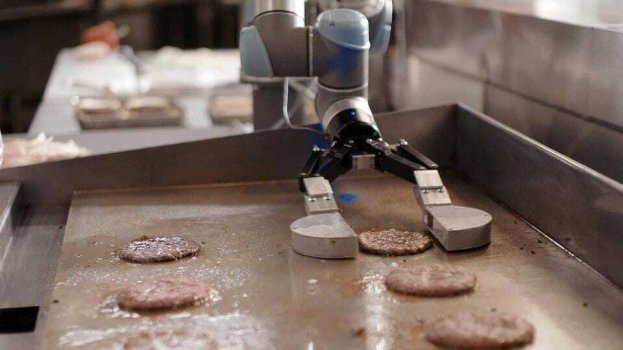When discussing Artificial Intelligence, many people express concern about AI replacing humans in the workforce. Some jobs will undoubtedly be replaced, but that is not necessarily a bad thing. Early on, companies will apply AI to the work that humans either should not, will not, or can not do, making the workplace safer and more efficient than ever before.
Here’s exactly what I mean:
1. Jobs AI can do that humans should not
Industries like logging, oil rig work, metal foundries, electrical line repair, roofing, and chemical factories are the cause of 2.3 million workplace deaths, 160 million illnesses, and 340 million accidents worldwide, according to the International Labor Organization. This comes at a global cost of 2.8 trillion dollars, and an incalculable personal cost to those who lose loved ones.
It doesn’t have to be this way. The most obvious ways that an AI augmented workforce can help involve automation and robotics, like welding, the application of toxic paints and adhesives, lifting, moving, and stacking heavy items, and delivering goods with autonomous vehicles. Artificial intelligence technologies like computer vision and machine learning often enable machines to do these jobs as effectively as humans, without nearly as many safety concerns.
Looking deeper, AI can reduce workplace hazards even when humans execute the labor. Computer vision systems from companies like Intenseye and HGS monitor warehouses, factory floors, and other work environments to identify objects in the path of forklifts, unstable goods stacking, and even dangerous employee behavior like misuse of protective gear or execution of unauthorized work. Meanwhile, machine learning algorithms use data to predict when accidents are most likely to happen based on time of day, hours an employee has been working, age, experience, and a constellation of other factors too sophisticated for human supervisors to parse alone.
AI can even be used in training to proactively reduce accidents. Companies like Taqtile, Atheer, and Ario already use immersive technologies like VR and AR to prepare front line workers for difficult and dangerous roles. Consulting firm Booz Allen Hamilton predicts that AI solutions like natural language processing, artificial neural networks, and deep learning will soon be used to accustom workers to random but realistic workplace hazards so that they will be better prepared if such unpredictable events occur on the job in real life.
Continue reading: https://www.forbes.com/sites/glenngow/2022/10/30/the-argument-for-an-ai-augmented-workforce/?sh=64d9dab12f4c
Here’s exactly what I mean:
1. Jobs AI can do that humans should not
Industries like logging, oil rig work, metal foundries, electrical line repair, roofing, and chemical factories are the cause of 2.3 million workplace deaths, 160 million illnesses, and 340 million accidents worldwide, according to the International Labor Organization. This comes at a global cost of 2.8 trillion dollars, and an incalculable personal cost to those who lose loved ones.
It doesn’t have to be this way. The most obvious ways that an AI augmented workforce can help involve automation and robotics, like welding, the application of toxic paints and adhesives, lifting, moving, and stacking heavy items, and delivering goods with autonomous vehicles. Artificial intelligence technologies like computer vision and machine learning often enable machines to do these jobs as effectively as humans, without nearly as many safety concerns.
Looking deeper, AI can reduce workplace hazards even when humans execute the labor. Computer vision systems from companies like Intenseye and HGS monitor warehouses, factory floors, and other work environments to identify objects in the path of forklifts, unstable goods stacking, and even dangerous employee behavior like misuse of protective gear or execution of unauthorized work. Meanwhile, machine learning algorithms use data to predict when accidents are most likely to happen based on time of day, hours an employee has been working, age, experience, and a constellation of other factors too sophisticated for human supervisors to parse alone.
AI can even be used in training to proactively reduce accidents. Companies like Taqtile, Atheer, and Ario already use immersive technologies like VR and AR to prepare front line workers for difficult and dangerous roles. Consulting firm Booz Allen Hamilton predicts that AI solutions like natural language processing, artificial neural networks, and deep learning will soon be used to accustom workers to random but realistic workplace hazards so that they will be better prepared if such unpredictable events occur on the job in real life.
Continue reading: https://www.forbes.com/sites/glenngow/2022/10/30/the-argument-for-an-ai-augmented-workforce/?sh=64d9dab12f4c

